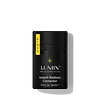What's inside
What's inside
 Key Ingredients
Key Ingredients

No key ingredients
 Benefits
Benefits

 Concerns
Concerns

 Ingredients Side-by-side
Ingredients Side-by-side

Water
Skin ConditioningCyclopentasiloxane
EmollientPhenyl Trimethicone
Skin ConditioningDipropylene Glycol
HumectantButylene Glycol
HumectantHexyl Laurate
EmollientCaprylic/Capric Triglyceride
Masking1,2-Hexanediol
Skin ConditioningVinyl Dimethicone/Methicone Silsesquioxane Crosspolymer
Silica
AbrasiveCetyl PEG/PPG-10/1 Dimethicone
EmulsifyingDimethicone
EmollientMagnesium Sulfate
Disteardimonium Hectorite
StabilisingNiacinamide
SmoothingCalcium Stearate
Cosmetic ColorantSorbitan Olivate
EmulsifyingPEG-10 Dimethicone
Skin ConditioningSorbitan Sesquioleate
EmulsifyingDimethicone/Vinyl Dimethicone Crosspolymer
Skin ConditioningCaprylyl Glycol
EmollientPEG/PPG-18/18 Dimethicone
EmulsifyingXanthan Gum
EmulsifyingSparassis Crispa Extract
Emulsion StabilisingPanthenol
Skin ConditioningEthylhexylglycerin
Skin ConditioningDipotassium Glycyrrhizate
HumectantAllantoin
Skin ConditioningTriethoxycaprylylsilane
Cyclohexasiloxane
EmollientSodium Hyaluronate
HumectantTremella Fuciformis Extract
HumectantMentha Rotundifolia Leaf Extract
TonicAnthemis Nobilis Flower Extract
MaskingAloe Barbadensis Leaf Extract
EmollientCentella Asiatica Extract
CleansingAsiaticoside
AntioxidantMadecassoside
AntioxidantMadecassic Acid
Skin ConditioningAsiatic Acid
Skin ConditioningCI 77891
Cosmetic ColorantCI 77288
Cosmetic ColorantCI 77492
Cosmetic ColorantWater, Cyclopentasiloxane, Phenyl Trimethicone, Dipropylene Glycol, Butylene Glycol, Hexyl Laurate, Caprylic/Capric Triglyceride, 1,2-Hexanediol, Vinyl Dimethicone/Methicone Silsesquioxane Crosspolymer, Silica, Cetyl PEG/PPG-10/1 Dimethicone, Dimethicone, Magnesium Sulfate, Disteardimonium Hectorite, Niacinamide, Calcium Stearate, Sorbitan Olivate, PEG-10 Dimethicone, Sorbitan Sesquioleate, Dimethicone/Vinyl Dimethicone Crosspolymer, Caprylyl Glycol, PEG/PPG-18/18 Dimethicone, Xanthan Gum, Sparassis Crispa Extract, Panthenol, Ethylhexylglycerin, Dipotassium Glycyrrhizate, Allantoin, Triethoxycaprylylsilane, Cyclohexasiloxane, Sodium Hyaluronate, Tremella Fuciformis Extract, Mentha Rotundifolia Leaf Extract, Anthemis Nobilis Flower Extract, Aloe Barbadensis Leaf Extract, Centella Asiatica Extract, Asiaticoside, Madecassoside, Madecassic Acid, Asiatic Acid, CI 77891, CI 77288, CI 77492
Water
Skin ConditioningDimethicone
EmollientGlycerin
HumectantEthylhexyl Palmitate
EmollientButylene Glycol
HumectantCetyl PEG/PPG-10/1 Dimethicone
EmulsifyingPentaerythrityl Tetraethylhexanoate
EmollientC30-45 Alkyl Dimethicone
Skin ConditioningIsohexadecane
EmollientDipropylene Glycol
HumectantPEG/PPG-18/18 Dimethicone
EmulsifyingMagnesium Sulfate
Phenoxyethanol
PreservativeCaprylyl Glycol
EmollientDimethiconol
EmollientSodium Palmitoyl Proline
Skin ConditioningSodium Benzoate
MaskingCentella Asiatica Extract
CleansingSodium Carboxymethyl Beta-Glucan
CleansingCitric Acid
BufferingNymphaea Alba Flower Extract
Skin ConditioningWater, Dimethicone, Glycerin, Ethylhexyl Palmitate, Butylene Glycol, Cetyl PEG/PPG-10/1 Dimethicone, Pentaerythrityl Tetraethylhexanoate, C30-45 Alkyl Dimethicone, Isohexadecane, Dipropylene Glycol, PEG/PPG-18/18 Dimethicone, Magnesium Sulfate, Phenoxyethanol, Caprylyl Glycol, Dimethiconol, Sodium Palmitoyl Proline, Sodium Benzoate, Centella Asiatica Extract, Sodium Carboxymethyl Beta-Glucan, Citric Acid, Nymphaea Alba Flower Extract
Ingredients Explained
These ingredients are found in both products.
Ingredients higher up in an ingredient list are typically present in a larger amount.
Butylene Glycol (or BG) is used within cosmetic products for a few different reasons:
Overall, Butylene Glycol is a safe and well-rounded ingredient that works well with other ingredients.
Though this ingredient works well with most skin types, some people with sensitive skin may experience a reaction such as allergic rashes, closed comedones, or itchiness.
Learn more about Butylene GlycolCaprylyl Glycol is a humectant and emollient, meaning it attracts and preserves moisture.
It is a common ingredient in many products, especially those designed to hydrate skin. The primary benefits are retaining moisture, skin softening, and promoting a healthy skin barrier.
Though Caprylyl Glycol is an alcohol derived from fatty acids, it is not the kind that can dry out skin.
This ingredient is also used as a preservative to extend the life of products. It has slight antimicrobial properties.
Learn more about Caprylyl GlycolCentella Asiatica Extract (Centella) is derived from an herb native to Southeast Asia. It is famous for its anti-inflammatory and soothing properties.
Centella is rich in antioxidants and amino acids, such as Madecassic Acid and Asiaticoside.
Studies show the compounds in centella help with:
The combination of all these properties makes centella effective at soothing, hydrating, and protecting the skin.
Other great components of centella include Vitamin A, vitamin C, several B vitamins, and Asiatic Acid.
Fun fact: Centella has been used as a medicine and in food for many centuries. As a medicine, it is used to treat burns, scratches, and wounds.
Learn more about Centella Asiatica ExtractThis ingredient is a high molecular weight silicone. It has emulsifying and skin conditioning properties.
Dimethicone is a type of synthetic silicone created from natural materials such as quartz.
What it does:
Dimethicone comes in different viscosities:
Depending on the viscosity, dimethicone has different properties.
Ingredients lists don't always show which type is used, so we recommend reaching out to the brand if you have questions about the viscosity.
This ingredient is unlikely to cause irritation because it does not get absorbed into skin. However, people with silicone allergies should be careful about using this ingredient.
Note: Dimethicone may contribute to pilling. This is because it is not oil or water soluble, so pilling may occur when layered with products. When mixed with heavy oils in a formula, the outcome is also quite greasy.
Learn more about DimethiconeDipropylene Glycol is a synthetically created humectant, stabilizer, and solvent.
This ingredient helps:
Dipropylene glycol is technically an alcohol, but it belongs to the glycol family (often considered part of the ‘good’ alcohols). This means it is hydrating and gentle on skin unlike drying solvent alcohols like denatured alcohol.
As a masking agent, Dipropylene Glycol can be used to cover the smell of other ingredients. However, it does not have a scent.
Studies show Dipropylene Glycol is considered safe to use in skincare.
Learn more about Dipropylene GlycolMagnesium Sulfate is a salt. More specifically, it is an epsom salt, or the bath salt used to help relieve muscle aches.
Despite having ‘sulfate’ in the name, it isn’t a surfactant or cleansing agent like sodium lauryl sulfate. Unlike those sulfates, magnesium sulfate doesn’t have the same cleansing or foaming properties (it's simply a type of salt).
In cosmetics, Magnesium Sulfate is used to thicken a product or help dilute other solids. It is a non-reactive and non-irritating ingredient.
One study shows magnesium deficiency may lead to inflammation of the skin. Applying magnesium topically may help reduce inflammation.
You can find this ingredient in sea water or mineral deposits.
Learn more about Magnesium SulfatePEG/PPG-18/18 Dimethicone is a type of silicone.
Water. It's the most common cosmetic ingredient of all. You'll usually see it at the top of ingredient lists, meaning that it makes up the largest part of the product.
So why is it so popular? Water most often acts as a solvent - this means that it helps dissolve other ingredients into the formulation.
You'll also recognize water as that liquid we all need to stay alive. If you see this, drink a glass of water. Stay hydrated!
Learn more about Water